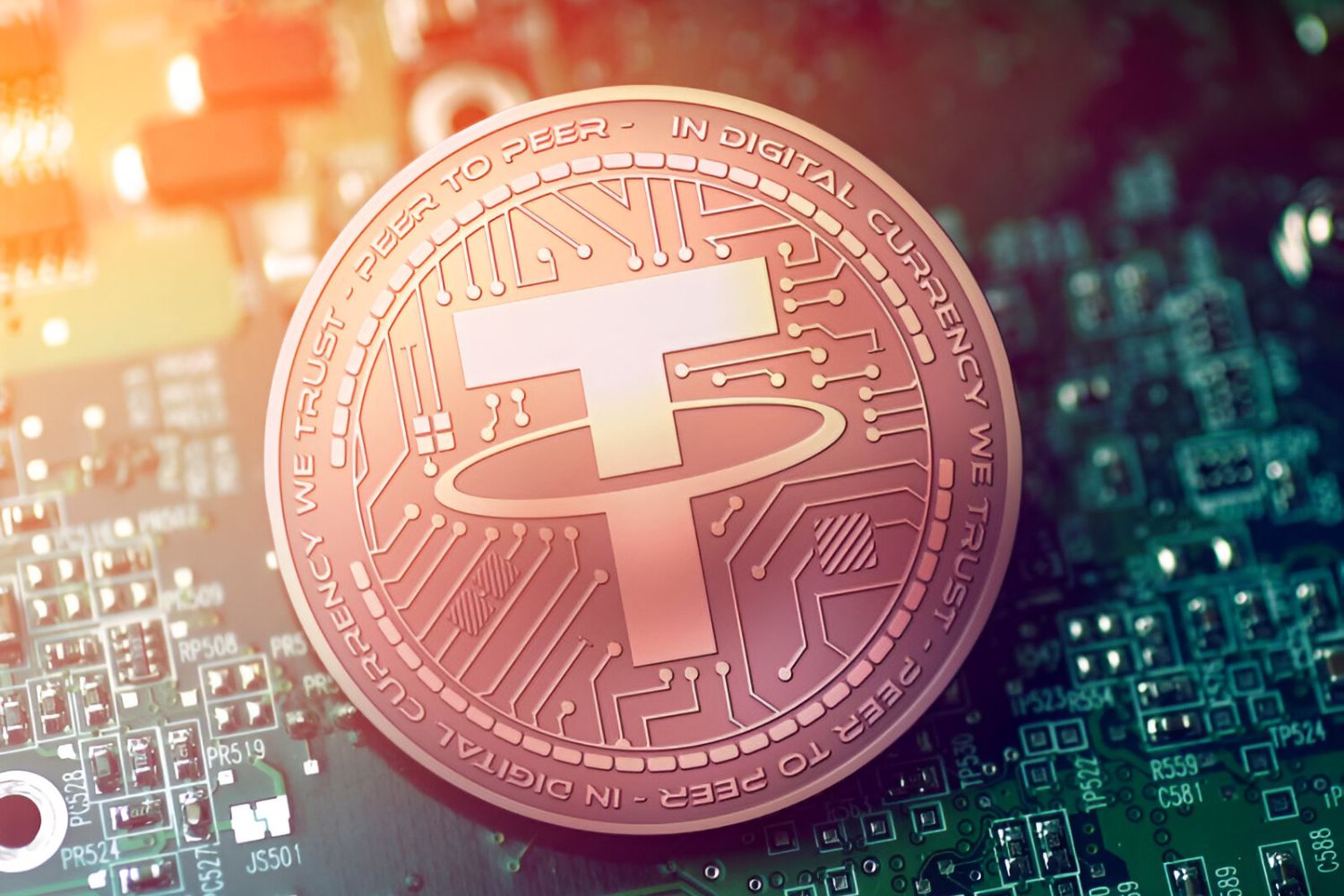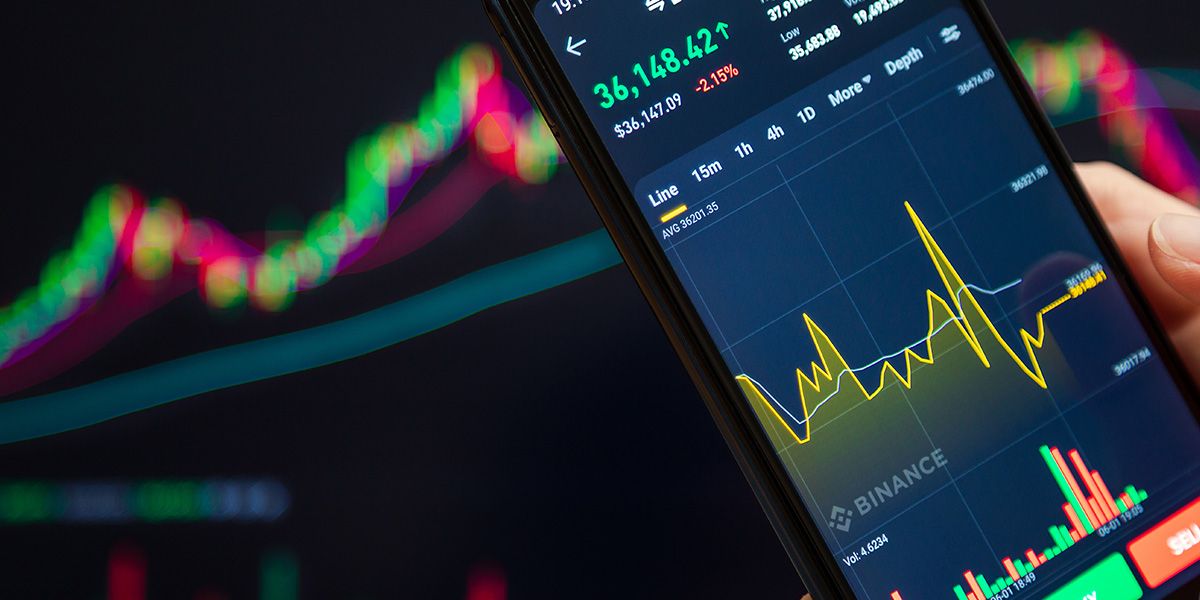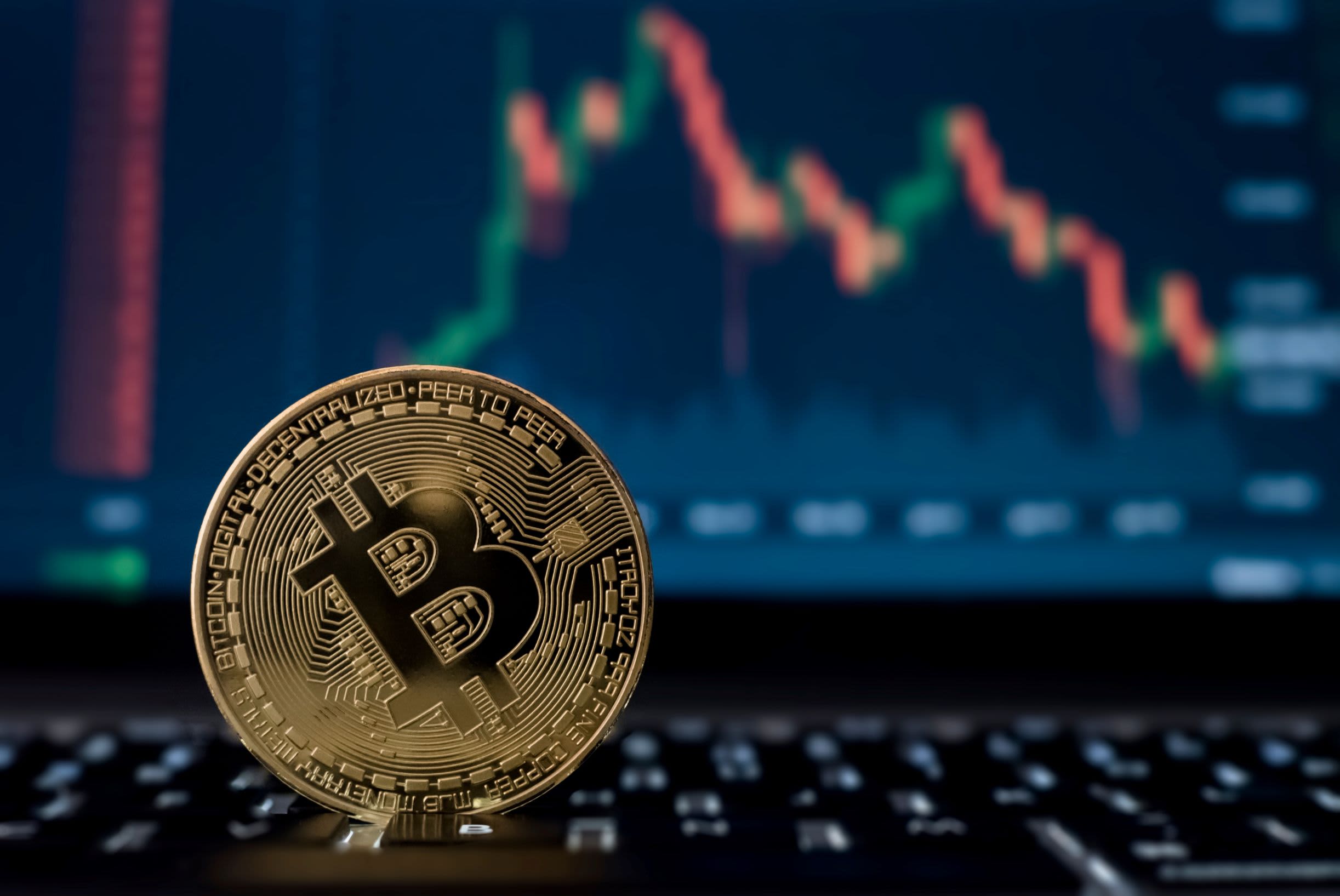What is the Digital Currency Market?
The digital currency market, also known as the cryptocurrency market, is a decentralized global market where various digital currencies are traded. Unlike traditional stock markets, the digital currency market operates on a 24/7 basis, allowing traders to buy, sell, and exchange cryptocurrencies at any time of the day or night.
Digital currencies, such as Bitcoin, Ethereum, and Litecoin, have gained widespread popularity in recent years, attracting investors, traders, and even mainstream businesses. These cryptocurrencies are based on blockchain technology, which ensures transparency, security, and immutability of transactions.
The digital currency market functions through digital exchanges, where users can create accounts and trade cryptocurrencies. These exchanges act as intermediaries, allowing buyers and sellers to connect and execute transactions.
One of the key features of the digital currency market is its global nature. Unlike traditional stock markets that operate in specific time zones, the digital currency market is not bound by geographical constraints. This means that traders from different parts of the world can participate in the market at any given time.
Moreover, the digital currency market is highly volatile and dynamic. Prices of cryptocurrencies can fluctuate rapidly, often driven by factors such as investor sentiment, regulatory developments, technological advancements, and market demand. This volatility presents both opportunities and risks for traders, making the market an exciting and challenging environment to navigate.
It is important to note that the digital currency market is still relatively young and evolving. As a result, it is subject to certain risks, including market manipulation, security vulnerabilities, and regulatory uncertainty. Traders and investors should carefully evaluate the risks and conduct thorough research before engaging in digital currency trading.
In summary, the digital currency market is a global marketplace where digital currencies are bought, sold, and exchanged. It operates on a 24/7 basis and is not restricted by traditional market hours. Traders should be aware of the high volatility and risks associated with digital currency trading and exercise caution when participating in this market.
Understanding Time Zones
When it comes to trading in the digital currency market, understanding time zones is crucial. As mentioned earlier, the digital currency market operates 24/7, but it is influenced by the trading activities of different regions around the world. This means that certain trading hours may be more active and volatile than others, depending on the time zone.
The global nature of the digital currency market means that it is constantly active, as trading activities from various countries span different time zones. As one market closes, another opens, creating a continuous cycle of trading. This allows traders from around the world to participate in the market at their convenience.
When determining the best time to trade digital currencies, it is important to consider the major financial centers and their respective time zones. The most influential financial markets for digital currency trading include the United States, Europe, and Asia.
In the United States, the New York Stock Exchange (NYSE) and Nasdaq are major players in the financial markets. These exchanges open at 9:30 AM Eastern Standard Time (EST) and close at 4:00 PM EST. The overlap between the closing of the US markets and the opening of the markets in Europe can create increased volatility during these hours.
Europe, with financial centers such as London, Frankfurt, and Paris, is another important region for digital currency trading. The opening of the European markets at 8:00 AM GMT and their closing at 4:30 PM GMT often coincide with active trading periods.
When it comes to Asia, markets like Tokyo, Hong Kong, and Singapore play a significant role in the digital currency market. The opening of these markets at 9:00 AM local time, followed by the opening of the Chinese market at 9:30 AM local time, can impact the trading volume and volatility.
It is worth noting that while certain trading hours may be associated with higher trading volume and volatility, the digital currency market is known for its 24/7 trading environment. This means that even during periods of lower activity, trading opportunities can still be found.
Traders should also consider the impact of daylight saving time (DST) changes in different countries. Some countries observe DST, which shifts their time zone by one hour during certain periods of the year. These changes can affect the trading hours and volatility in the digital currency market.
In summary, understanding time zones is essential for digital currency traders to make informed decisions about when to trade. By considering the opening and closing times of major financial centers and being aware of any daylight saving time changes, traders can take advantage of active trading periods and potential opportunities in the dynamic digital currency market.
Traditional Market Hours
Before delving into the specific trading hours of the digital currency market, it is important to understand the traditional market hours of the global financial centers. These traditional market hours can have an impact on the overall trading activity in the digital currency market.
The New York Stock Exchange (NYSE), one of the largest stock exchanges in the world, operates from 9:30 AM to 4:00 PM Eastern Standard Time (EST). This period is often referred to as regular trading hours. During this time, investors and traders can engage in various stock trades, including buying and selling shares of publicly traded companies.
In Europe, the London Stock Exchange (LSE) operates from 8:00 AM to 4:30 PM Greenwich Mean Time (GMT). Similar to the NYSE, the LSE’s regular trading hours are a significant driver of market activity in the region.
Asia also has its own major stock exchanges, including the Tokyo Stock Exchange (TSE), which operates from 9:00 AM to 3:00 PM local time, and the Hong Kong Stock Exchange (HKEX), which operates from 9:30 AM to 4:00 PM local time. These exchanges play a crucial role in the Asian markets and can impact global trading sentiment.
It is important to note that while traditional market hours may influence the digital currency market to some extent, the cryptocurrency market itself operates independently of these hours. Unlike traditional markets that have specific opening and closing times, the digital currency market is available for trading 24 hours a day, 7 days a week.
The accessibility and flexibility of the digital currency market allow traders to engage in transactions outside of traditional market hours. This means that even during nights, weekends, and holidays, digital currency trading remains open and active.
Traders who are interested in both traditional and digital currency markets need to find the right balance and determine when to allocate their time and resources. While traditional markets have their distinct trading hours and may influence trading sentiment, the digital currency market’s round-the-clock availability offers additional opportunities and flexibility.
In summary, traditional market hours in major financial centers such as New York, London, and Tokyo can impact market sentiment and trading activity. However, unlike traditional markets, the digital currency market operates 24/7, providing traders with continuous opportunities to buy, sell, and trade cryptocurrencies.
Common Digital Currency Trading Hours
While the digital currency market operates 24/7, there are certain time periods that are commonly associated with increased trading activity and volatility. Understanding these common trading hours can help traders identify potential opportunities and plan their trading strategies accordingly.
One of the most active trading periods in the digital currency market occurs when there is an overlap between the trading hours of major financial centers. For example, the overlap between the closing of the New York Stock Exchange (NYSE) at 4:00 PM Eastern Standard Time (EST) and the opening of the markets in Europe at 8:00 AM Greenwich Mean Time (GMT) often results in increased trading volume and volatility.
Another period of heightened activity is during the Asian trading session. The opening of markets in Asian financial centers, such as Tokyo, Hong Kong, and Singapore, at 9:00 AM local time can lead to increased trading volume as traders in the region start their day.
Additionally, events such as economic announcements, regulatory developments, and major news releases can significantly impact digital currency trading activity. During these events, trading volumes can spike, and price movements can be more pronounced. Traders should pay attention to these important events and consider adjusting their trading strategies accordingly.
It is also worth mentioning that weekends and holidays can have lower trading activity compared to weekdays. While the digital currency market remains open during these periods, the overall trading volume may be reduced.
Furthermore, market sentiment and trading activity can vary within different time zones, depending on the preferences and habits of traders in specific regions. It is important to monitor the trading patterns and behaviors of market participants in different regions to gain a better understanding of the overall market sentiment.
Overall, the common digital currency trading hours can be characterized by periods of overlap between major financial centers, active Asian trading sessions, and significant market events. By being aware of these periods, traders can take advantage of increased trading volume and volatility to execute their strategies effectively.
The 24/7 Nature of Cryptocurrency
One of the unique aspects of the digital currency market is its 24/7 trading nature. Unlike traditional financial markets that have specific opening and closing hours, cryptocurrencies can be traded around the clock, every day of the year.
This constant availability is made possible by the decentralized nature of cryptocurrencies. Transactions are recorded on a distributed ledger called the blockchain, which is accessible at all times. As a result, traders can buy, sell, and exchange digital currencies at any hour, regardless of their geographic location.
The 24/7 nature of cryptocurrency trading offers several benefits to traders and investors. Firstly, it provides flexibility, allowing individuals to engage in trading activities outside of traditional market hours. This is particularly beneficial for those who have other commitments during the day, such as a full-time job or other personal responsibilities.
Furthermore, the continuous trading environment allows traders to react quickly to market events and take advantage of opportunities as they arise. Cryptocurrency prices are known for their volatility, and being able to trade at any time enables traders to capitalize on price movements, no matter when they occur.
Another advantage of the 24/7 nature of cryptocurrency trading is its accessibility to a global audience. Unlike traditional markets that may be limited by geographic boundaries or time zones, the digital currency market is open to anyone with an internet connection. This inclusivity allows individuals from different countries and time zones to participate in the market and contribute to its liquidity.
However, it’s important to note that the 24/7 trading environment also presents challenges and risks. The constant availability of the market means that traders need to be vigilant and monitor their positions at all times. Price movements can occur while they are sleeping or not actively participating in trading, which can result in significant gains or losses.
Moreover, the lack of regulation and oversight in the cryptocurrency market can make it prone to manipulation and fraudulent activities. Traders should exercise caution, conduct thorough research, and use reputable cryptocurrency exchanges to mitigate these risks.
In summary, the 24/7 nature of cryptocurrency trading provides traders with flexibility, accessibility, and the ability to react quickly to market movements. However, traders should also be aware of the associated risks and take necessary precautions to protect their investments in this dynamic and ever-evolving market.
Factors Influencing Crypto Trading Time
The timing of cryptocurrency trading can be influenced by various factors that impact market activity and volatility. Understanding these factors can help traders make informed decisions about when to engage in cryptocurrency trading.
Market Opening and Closing Hours: While the digital currency market operates 24/7, some traders prefer to focus their attention on specific time periods when there is higher trading volume and liquidity. The opening and closing hours of major financial centers, such as New York, London, and Tokyo, can influence trading sentiment and activity.
News and Events: Major news releases, economic announcements, and significant events related to cryptocurrencies can have a significant impact on trading activity. These events can cause price movements and increased volatility, attracting traders who want to take advantage of potential opportunities. Traders often pay close attention to news and events that may affect the market and adjust their trading strategies accordingly.
Regulatory Developments: Regulatory developments, such as government regulations or policy changes regarding cryptocurrencies, can greatly influence trading time. News of impending regulations or legal actions can create uncertainty and lead to heightened market activity. Traders may choose to enter or exit positions based on the potential impact of regulatory changes.
Market Sentiment: Market sentiment, which refers to the overall attitude and feelings of traders and investors towards the market, can affect trading time. During periods of positive sentiment, more traders may enter the market, driving increased trading volume and potentially higher price movements. Conversely, negative market sentiment can lead to decreased trading activity. Monitoring market sentiment can help traders gauge the optimal time to participate in the market.
Volatility: Volatility is a key characteristic of the cryptocurrency market, and some traders actively seek out periods of heightened volatility to maximize potential profits. When the market experiences significant price fluctuations, it can present trading opportunities, particularly for short-term traders and day traders. Identifying periods of increased volatility can help traders determine the best time to engage in cryptocurrency trading.
Time Zone Variations: Traders should be aware of time zone differences and how they may affect trading activity. Trading volume and volatility can vary depending on the time of day and the geographic location of market participants. For example, during Asian trading hours, when markets in Tokyo, Hong Kong, and Singapore are open, there may be increased trading activity specific to that region.
In summary, several factors influence the timing of cryptocurrency trading. These factors include market opening and closing hours, news and events, regulatory developments, market sentiment, volatility, and time zone variations. By considering these factors, traders can make informed decisions about when to engage in cryptocurrency trading and potentially capitalize on market opportunities.
Trading Strategies Based on Market Hours
Market hours play a significant role in shaping trading strategies in the digital currency market. Traders often develop specific approaches based on the characteristics of different trading hours to maximize their potential for success. Here are a few common trading strategies based on market hours:
1. Scalping: Scalping is a trading strategy that focuses on making small, quick profits by taking advantage of short-term price movements. Traders using this strategy often prefer highly volatile periods with significant trading volume. These may include overlaps between major financial centers or times when important economic announcements are released. Scalpers aim to take advantage of rapid price swings and execute multiple trades within short time frames.
2. Breakout Trading: Breakout trading involves identifying key levels of support and resistance and entering trades when the price breaks out of these levels. Traders using this strategy often look for breakouts during periods of high trading volume and volatility. These breakouts can occur following major news releases, market openings, or when prices breach significant technical levels. Breakout traders aim to capitalize on substantial price movements that can occur when new market trends emerge.
3. Range Trading: Range trading is a strategy that focuses on trading within specific price ranges. Traders using this strategy identify levels of support and resistance, and execute trades when the price bounces off these levels. This strategy is commonly employed during periods of lower volatility when the market is relatively stable. Range traders aim to profit from price oscillations between established boundaries.
4. News Trading: News trading involves taking positions based on the immediate impact of major news announcements on the cryptocurrency market. Traders using this strategy closely monitor economic releases, regulatory developments, and other news that could influence market sentiment. They aim to capitalize on short-term price movements triggered by news events. News traders often focus on periods when major news releases are scheduled, such as economic data announcements or important speeches by influential figures.
5. Position Trading: Position trading is a longer-term strategy that focuses on capturing larger price movements over extended periods. Traders using this strategy often hold positions for weeks, months, or even years. Position traders typically plan their trades based on fundamental analysis, considering factors such as market trends, industry developments, and economic conditions. They aim to take advantage of sustained market trends and may not be as reliant on specific market hours or short-term price fluctuations.
It’s important to note that each trading strategy comes with its own risks and potential rewards. Traders should thoroughly research and understand the strategies they choose to employ and consider their risk tolerance and investment objectives.
In summary, trading strategies in the digital currency market can be tailored based on market hours. Scalping, breakout trading, range trading, news trading, and position trading are some examples of strategies that traders may adopt to maximize their potential for profit. By analyzing market characteristics during different trading hours, traders can determine the strategy that best aligns with their trading goals and preferences.
Conclusion
The digital currency market is a global and dynamic marketplace that operates 24/7, allowing traders to buy, sell, and exchange cryptocurrencies at any time. Understanding time zones, traditional market hours, and the factors influencing crypto trading time are essential for traders looking to navigate this market successfully.
By considering the opening and closing hours of major financial centers, traders can identify periods of increased trading volume and volatility. Factors such as news and events, regulatory developments, market sentiment, volatility, and time zone variations also play a role in determining the optimal trading time.
Traders can develop various trading strategies based on market hours. Scalping, breakout trading, range trading, news trading, and position trading are some examples of strategies that traders may utilize to maximize their potential for profit.
It’s important to note that the 24/7 nature of the digital currency market brings both opportunities and risks. While the flexibility and accessibility of round-the-clock trading provide benefits, traders should also remain vigilant and exercise caution due to the market’s volatility and risks associated with the lack of regulation.
In summary, understanding market hours, time zones, and the factors influencing trading time can empower traders to make informed decisions and capitalize on trading opportunities in the digital currency market. By combining this knowledge with well-defined trading strategies, traders can increase their chances of success in this dynamic and evolving market.

























